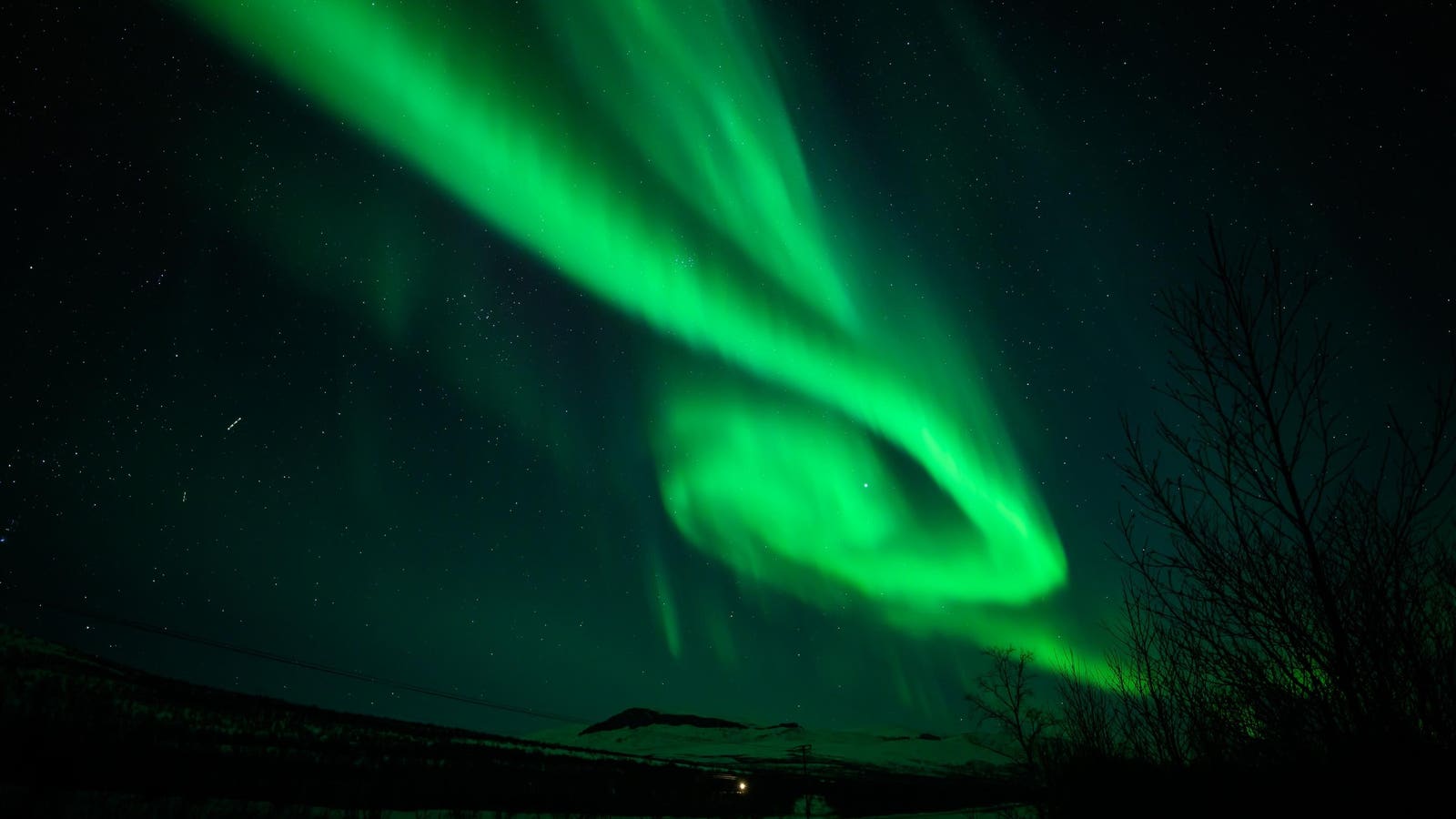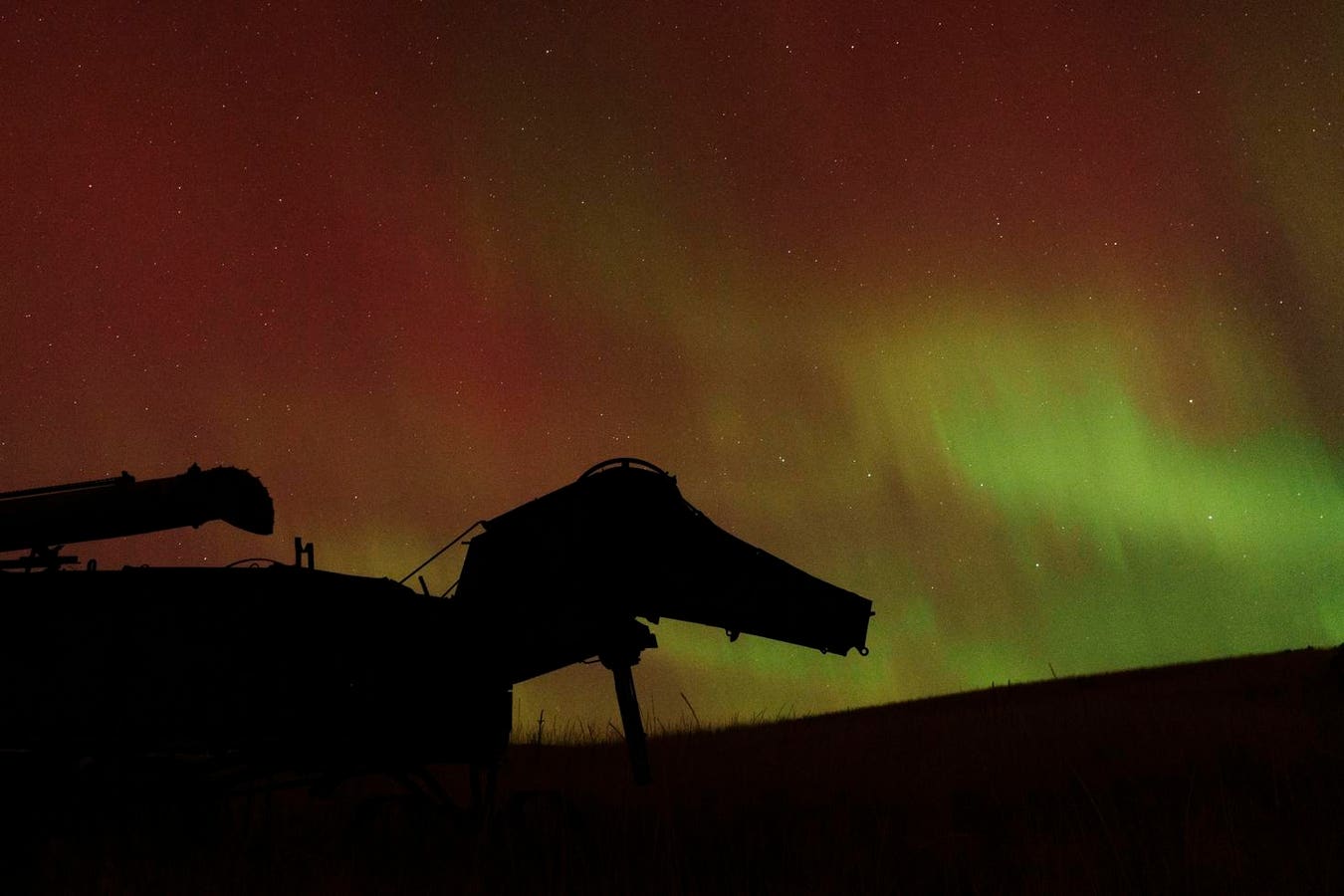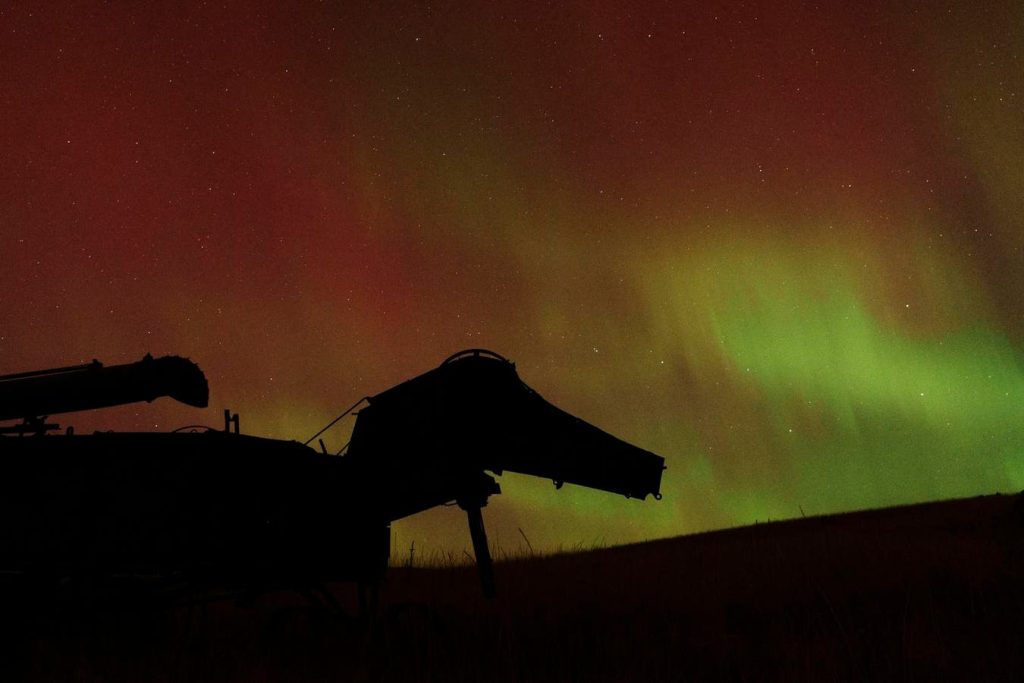Topline
A grouping of northern states in the U.S. could have an opportunity to see the northern lights on Tuesday, though no geomagnetic storms are forecast, according to the National Oceanic and Atmospheric Administration.
No geomagnetic storms or “significant” solar wind features are expected, forecasters said.
Getty Images
Key Facts
NOAA forecast a Kp index of four on a scale of nine for Tuesday night, suggesting a minimal opportunity to see aurora borealis is expected in states just below the Canadian border.
No minor or greater geomagnetic storms are expected through Thursday night, while no “significant” solar wind features are forecast to bring the northern lights to more states, according to NOAA’s three-day outlook.
Calmer auroral activity is projected through Thursday, with a maximum Kp index of around two forecast for Wednesday and Thursday.
Where Will The Northern Lights Be Visible?
Most of Alaska will have a high chance of seeing the northern lights as the sun sets, while a lesser opportunity is forecast for parts of Washington, Idaho, Montana, North Dakota, South Dakota, Minnesota, Wisconsin, Upper Michigan, and Maine. (See map below.)
What’s The Best Way To See The Northern Lights?
The northern lights are more visible through the winter months as the days shorten, though they can be seen throughout the year depending on solar activity. Aurora borealis is best seen between 10 p.m. and 2 a.m. local time, according to NOAA, which recommends traveling to a high vantage point away from light pollution to observe the phenomenon.
What’s The Best Way To Photograph The Northern Lights?
Aurora borealis is best captured with a wide-angle lens, an aperture or F-stop of four or less and a focus set to the furthest possible setting if using a regular camera, photography experts told National Geographic. With a smartphone, NOAA recommends enabling night mode, disabling flash and using a tripod to stabilize the image.
Key Background
NOAA and NASA have projected increased auroral activity into early 2026, after activity on the sun’s surface achieved a “solar maximum.” This peak, achieved periodically throughout the sun’s 11-year cycle, features an increase in solar events like coronal mass ejections and solar flares. Electrons from solar events become “excited” once interacting with oxygen and nitrogen in the Earth’s atmosphere, causing them to release energy in the form of swirling lights. Last year, forecasters said the strongest auroral displays in roughly 500 years were visible, as the northern lights were seen as far south as Florida and southern California.











